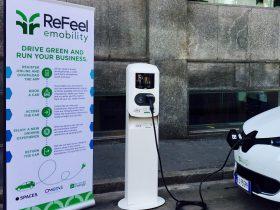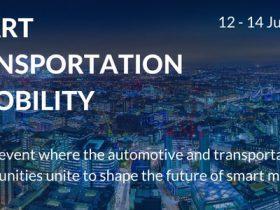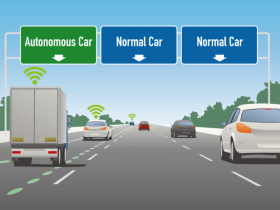By Thomas Glare
What is social mobility? Mobility is a multidimensional idea since it communicates the potential for a motion just as the motion itself. It is a decision to be practiced and that is not reliant upon monetary and social objectives.
Mobility is experiencing one of the most transformational movements of the age, with expansive ramifications for how we live our lives. The eventual fate of mobility being fuelled by three key innovation-driven problematic patterns: changing to electric vehicles, self-driven vehicles and Mobility-as-a-Service (Mobility). In what manner can customers and businesses hold onto the advantages of this mobility change?
Why the Developing Enthusiasm for Mobility?
To a limited extent, the inspiration is because of evolving socioeconomics. The world keeps on urbanizing with 55% of the worldwide populace living in urban territories today. By 2050, projections suggest an increment of up to 68%. This expanding urbanization will add to existing issues of traffic jams.
A developing group of proof from this website recommends that more infrastructure won’t tackle the issue. It’s excessively expensive and this kind of “mobility solutions” will only briefly help. Mobility has been advancing as a superior method to oversee traffic congestion by utilizing existing private and public vehicle frameworks.
It could shorten driving occasions and make commuting increasingly advantageous. It could help move worker trips from peaks to low seasons. At long last, Mobility could improve air quality by moving travelers from vehicles to progressively sustainable modes, for example, public vehicles, through payment frameworks.

The Acceleration of Electric Vehicles
The financial implications for Large Commercial Vehicles (LCVs) are significantly all the more convincing, because of fleet scale economies and high use, which ought to bring Total Cost of Ownership (TCO) equality sooner than for traveler vehicles. The intense cost and TCO affectability of LCV can make this segment a pioneer in electric vehicle reception; however, an absence of adequate reasonable models available implies that selection at present falls behind that of passenger vehicles.
Heavier business vehicles, may then again take impressively longer to go electric, because of the enormous battery sizes required for long-separation haulage and the time taken to charge. Alternative refills, for example, natural gas and hydrogen make up other sensible options.
Mobility smart vehicles take-up may have started energetically but it requires various cultural and conduct changes to have far-reaching boundaries.

Self-Driving Vehicles
Connected and Autonomous Vehicles (CAVs) offer a chance to change the world by on a very basic level adjusting how individuals and merchandise are moved. It could improve security and congestion, while creating free mobility to prohibited individuals, for example, more youthful or more seasoned travelers. It could likewise expand profitability, bring a new travel experience, change the jobs of future personnel and free up significant urban land like parking areas.
From a traveler experience point of view, the network ought to altogether widen the extent of in-vehicle entertainment, business, wellbeing, and work chances. CAV ought to likewise upgrade road execution, empowering transport specialists to oversee limit on occupied highways, utilizing CAV correspondences foundation to keep traffic streaming and decrease jams.

The Emerging Mobility Ecosystem
Wellsprings of significant worth will in a general sense move both inside worth chains and across the ecosystem. The worth gotten from the present individual vehicle is reasonably split between upstream (crude materials to completed vehicles) and downstream (all different pieces of the worth chain).
Clients regularly legitimately purchase amenities, for example, fuelling, insurance, upkeep and fix. Downstream incomes related to personally claimed vehicles are assessed at $45,000 over a vehicle’s lifetime (KPMG Mobility 2030 examination). But, by 2030, in an EV-CAV-Mobility world, we accept the downstream worth could be as much as ten times bigger, driven by new, carefully empowered income streams.
Having appreciated long periods of solid, unfaltering incomes and a decent portion of the value network, officeholders and maybe even whole divisions might be wiped out, while public doors for new administrations (and new participants) will rise. The effect of mobility cars is probably going to be extensive.
Staking a Place in the New Mobility Ecosystem
Choices made presently are probably going to decide the future for some organizations, with some situated for progress, and others confronting a battle for endurance.
As officeholders, new participants and new companies go after a portion of the mobility market, each ought to think about where to play and how to win. Organizations just have a little chance to excel and position themselves to shape the future environment. This implies being a quick mover, by validating gainful organizations, securing targets and organizing inner budgetary, business and working models.
In this problematic setting, authoritative pioneers may feel overpowered and questioning of the means they have to take. And while the state of things to come for the mobility environment stays vague, it is as of now quickly changing.

The Innovators
Green Mobility is a carbon-neutral, electric vehicle sharing service. They influence three current worldwide megatrends: sustainability, urbanization and sharing economy to help make a more beneficial, wealthier tomorrow. Consequently, Green Mobility and its representatives, are genuine innovators.
With regards to mobility arrangements, Pride mobility scooters with included mobility scooter batteries are in their very own class. With various models that will take into account explicit needs.
The Challenges
Mobility requires an ability by private and public vehicle suppliers to work with the makers of Mobility platforms. Transport suppliers must consent to enable the Mobility administrator to sell their administrations and gather a “sensible” and “reasonable” commission for each ticket sold.
Another test is getting private administrators to take part in spite of losing clients for the time being. Backers recommend that, if the idea is fruitful, the pool of clients will develop as vehicles are handed over for Mobility. Subsequently, most organizations will need to take part in at least one or more Mobility stages.
Conclusion
For its capability to be acknowledged, Mobility needs governments to guarantee a playing field that is reasonable for existing and new mobility specialist organizations, and one that energizes collaboration instead of rivalry. Are you are a mobility administrator? Disclose your story to us! Get in touch with us today!
Author Bio:
An honor winning writer covering expression and culture, the writer began work composing for his school paper before Thomas Glare became loyal to the green initiative. He has filled in as a correspondent, essayist, and critic; as a mentor of youthful writers and columnists across America; and as a first-page insightful journalist.



















